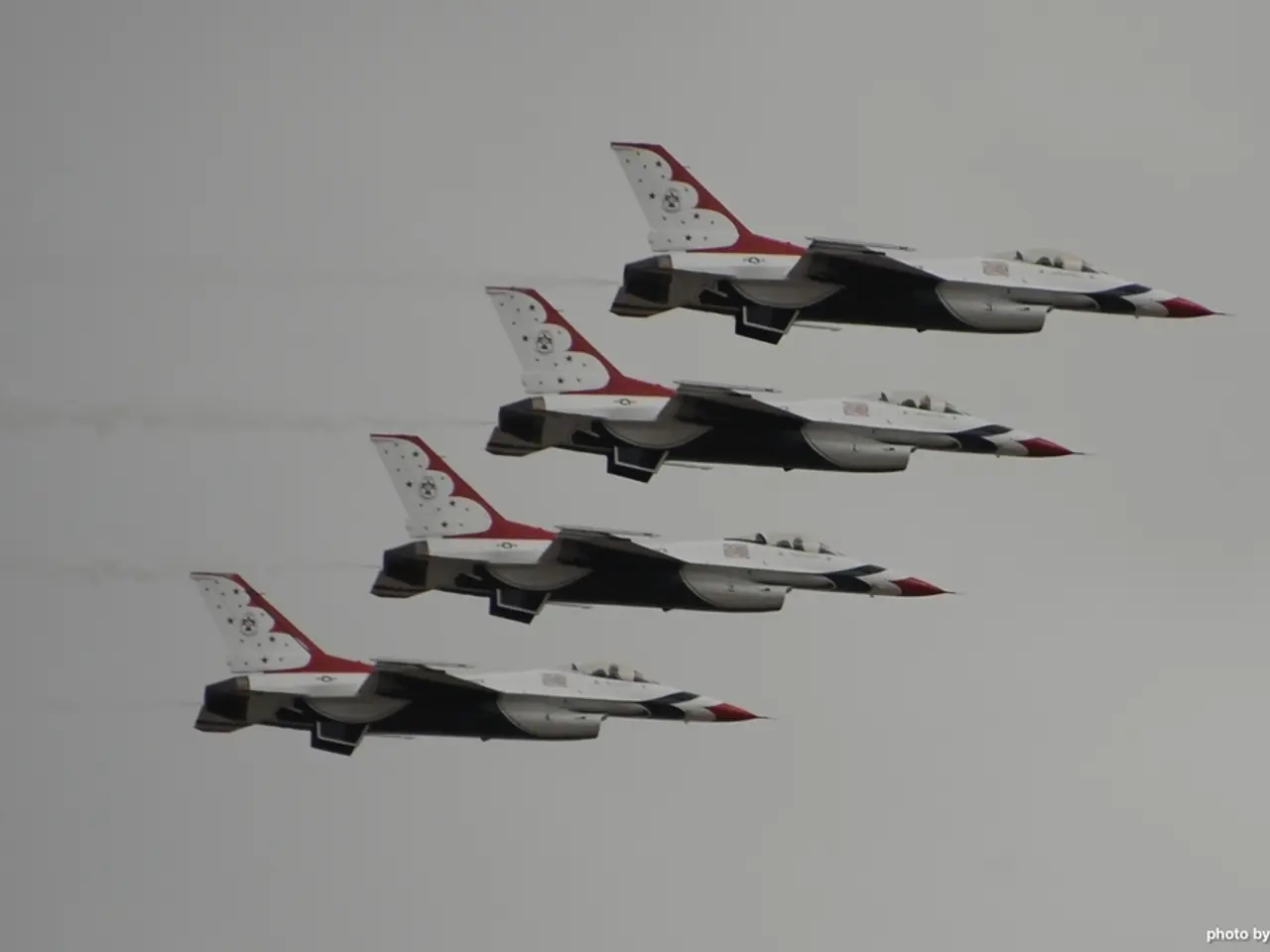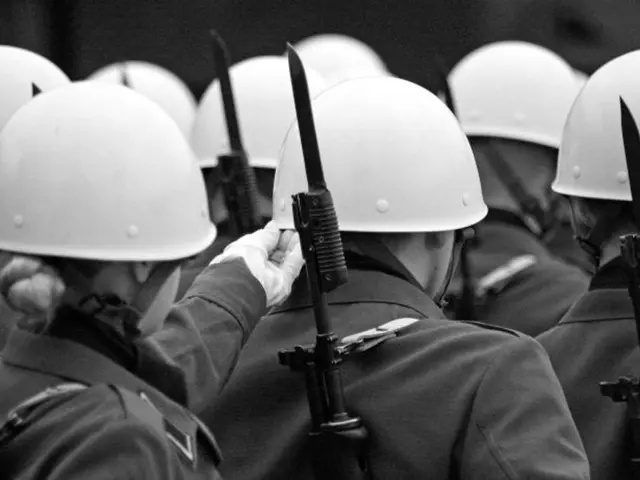Japan sends out its initial fleet of F-35B stealth aircrafts
Japan Bolsters Defense Capabilities with F-35B Stealth Fighter Deployment
Japan has taken a significant step in enhancing its defense capabilities with the deployment of F-35B stealth fighters to the Nyutabaru Air Base in southern Japan. This move marks the first time since World War II that Japan has operated carrier-capable fighter jets, signifying a shift towards more flexible, carrier-capable air power in its self-defense forces [1][2][4].
The F-35B, a short takeoff and vertical landing (STOVL) stealth multirole fighter, provides Japan with rapid-response and flexible aerial combat capabilities that are critical for defending the southern islands and maintaining control over the Nansei Islands chain, a strategic barrier close to Taiwan and key to the so-called "first island chain" containment strategy against China [1][2][4].
The Defense Ministry of Japan deployed three F-35B stealth fighters to the Nyutabaru base in Shintomi, Miyazaki Prefecture on August 7, with plans to deploy a total of eight F-35B jets to Nyutabaru by March 2026 [3][4]. The operation is in response to China's growing maritime assertiveness and is expected to bolster the defense of Japan's southwestern remote islands.
The Izumo and Kaga destroyers, currently being modified to serve as de facto aircraft carriers, are expected to operate with the F-35B stealth fighters. However, it is important to note that this operation may run counter to Japan's defense-only policy, raising questions about the country's stance on military expansion [5].
The modification of the Izumo and Kaga destroyers to serve as de facto aircraft carriers is a recent development, and these vessels are not currently operational aircraft carriers [5]. The F-35B stealth fighters' operation with the Maritime SDF's Izumo and Kaga destroyers is a potential escalation in Japan's defense strategy, reflecting Japan's commitment to strengthening its southern defenses and ensuring rapid operational readiness in the strategically sensitive area [1][4].
Japan aims to expand its F-35B fleet to 42 aircraft in the future, and plans to deploy five more F-35Bs by the end of fiscal 2025 [3]. This deployment significantly bolsters Japan's rapid-response and stealth combat capabilities in a key geographic area, enhancing deterrence and defense against China's growing maritime assertiveness and supporting Japan's broader strategy of maintaining regional stability and sovereignty in contested waters.
[1] Nikkei Asia. (2021, August 7). Japan deploys F-35B stealth fighter jets to southern base. Retrieved from https://asia.nikkei.com/Politics/International-relations/Japan-deploys-F-35B-stealth-fighter-jets-to-southern-base
[2] The Diplomat. (2021, August 9). Japan Deploys F-35B Stealth Fighters to Southern Island Base. Retrieved from https://thediplomat.com/2021/08/japan-deploys-f-35b-stealth-fighters-to-southern-island-base/
[3] Japan Times. (2021, August 7). Japan deploys F-35B stealth fighters to southern base in first such move since World War II. Retrieved from https://www.japantimes.co.jp/news/2021/08/07/national/japan-deploys-f-35b-stealth-fighters-to-southern-base-in-first-such-move-since-world-war-ii/
[4] Reuters. (2021, August 7). Japan deploys F-35B stealth fighters to southern base in first such move since World War II. Retrieved from https://www.reuters.com/world/asia-pacific/japan-deploys-f-35b-stealth-fighters-southern-base-first-such-move-since-world-war-ii-2021-08-07/
[5] The Japan Times. (2021, August 10). Izumo, Kaga destroyers to be modified to serve as de facto aircraft carriers. Retrieved from https://www.japantimes.co.jp/news/2021/08/10/national/izumo-kaga-destroyers-aircraft-carriers/
The Defense Ministry's decision to deploy F-35B stealth fighters is indicative of a policy shift in Japan's defense industry, a strategic move powered by finance from the government. The operation of F-35B stealth fighters with the Izumo and Kaga destroyers, potentially serving as de facto aircraft carriers, suggests an evolution in Japan's aerospace sector, bridging the gap between military defense and civilian aircraft technologies.








